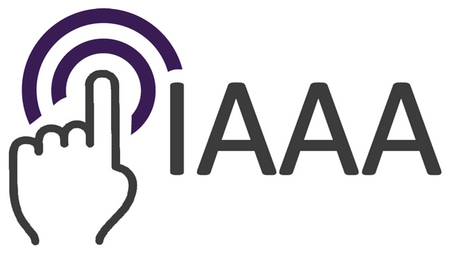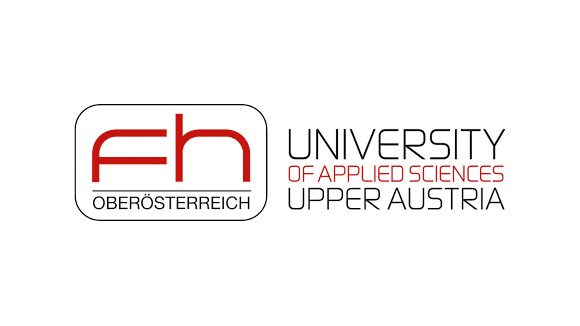"Analyzing Interaction for Automated Adaptation – First Steps in the IAAA Project",International Journal of Electronics and Telecommunications,vol. 61,no. 2,2015.
IAAA - Interaction Analysis for Automated Adaptation
Start date: 01-10-2014
End date: 30-09-2016
Categories:
- Human-Computer Interaction
- Interaction Methods
- Accessibility
- Personalization
Motivation
Nowadays, personalization plays a major role in many computer-based systems. And still, it can be expected to become even more important due to the European and national programme Strategie 2020 considering demographic changes, potentially aging employees or the focus on intelligent production processes. Also, the percentage of people with disabilities in the work force, often assisted by special hard and software, should be increased. Because of that, the necessity to mold software systems to match the requirements of a preferably large user basis is essential. However, this is a very costly process and means a lot of effort if it is done without automatization.
The IAAA project deals with the development of s a tool which is capable of an automated analysis of interactions and gathering of usage data which later helps to personalize an interaction setting.
The results of these analyses are then stored into a user model, which is later used to recommend input devices and personalizing them, depending on the gathered usage data. Additionally, this information can be used to adapt the user interface (software) accordingly. Thanks to this automated process, a too high effort for the personalization can be circumvented.
People with disabilities have been chosen as an initial target group because this target group seems to have the most versatile requirements to interactive systems. Moreover, considering inclusion aspects it is surely easier to extend the gained knowledge to non-impaired users than to make this transfer vice versa.
Initial Situation
Computer-based are present in many areas of our daily lives. Demographic change and inclusion lead to ever broader target groups of users of interactive systems. Personalization of software is becoming more and more important to cope with this broad user bases. Personalization leads to a decrease in input errors and an increase in the User Experience.
However, manual personalization poses a lot of effort and is costly.
Solutions and Aims
- Initial target group (with diverse requirements): people with disabilities.
- Realistic assessment of specific users' interaction capabilities.
- Automated adaptation of human-computer interaction.
- Tool for the consultation of people with disabilities (e.g., recommendation of suitable input devices).
Results
- A generic user model
- A generic user modeling framework connecting arbitrary interaction methods and devices
- Several device prototypes supporting novel interaction techniques such as 3D pressure
Project Website
Find more information at iaaa.fh-hagenberg.at
Publications
"The Role of Haptics in User Input for Simple 3D Interaction Tasks - An Analysis of Interaction Performance and User Experience",in Proceedings of the 2nd International Conference on Human Computer Interaction Theory and Applications,Funchal, Madeira, Portugal,2018.
"Tangible Interaction for Simple 3D Interaction Tasks: Comparing Device-In-Hand and Hand-In-Device Scenarios",in Proceedings of the 2nd International Conference on Computer-Human Interaction Research and Applications,Sevilla, Spain,2018,pp. 23-33.
"Layered Evaluation of a Personalized Interaction Approach",in UMAP '17: Adjunct Publication of the 25th Conference on User Modeling, Adaptation and Personalization,Bratislava, Slovakia,2017,pp. 173-178.
"A Personalized Interaction Approach - Motivation and Use Case",in UMAP '17: Adjunct Publication of the 25th Conference on User Modeling, Adaptation and Personalization,Bratislava, Slovakia,2017,pp. 221-226.
"The Role of Haptics in User Input for People with Motor and Cognitive Impairments",in Proceedings of the 2017 AAATE Conference,Sheffield, UK,2017,pp. 183-194.
"User Modeling Features Related to Physical Pressure",in Proceedings of the 13th International Conference on Advances in Mobile Computing and Multimedia,Brussels, Belgium,2015,pp. 338-341.
"An Analysis and Modeling Framework for Personalized Interaction",in IUI '17 Companion: Proceedings of the 22nd International Conference on Intelligent User Interfaces Companion,Limassol, Cyprus, Greece,2017,pp. 57-60.
"Learning Special Input Methods with Personalized Game Applications",in Proceedings of ABIS 2016 - 22nd International Workshop on Intelligent and Personalized Human-Computer Interaction,Aachen, Germany,2016.
"Multi-Modal Interaction with Mobiles and Wearables for People with Impairments",in Proceedings of the 3rd International Workshop on Collaboration Meets Interactive Surfaces,Funchal, Madeira, Portugal,2015.
"IAAA - Interaction Analysis for Automated Adaptation",in Tagungsband 9. Forschungsforum der österreichischen Fachhochschulen,Hagenberg, Austria,2015.
"Measuring Physical Pressure in Smart Phone Interaction for People with Impairments",in Mensch und Computer 2015 Workshopband,Stuttgart, Germany,2015,pp. 283-290.
"Modelling Touchless Interaction for People with Special Needs",in Mensch & Computer 2014 - Workshopband,Munich, Germany,2014,pp. 157-166.
"User Modelling for People with Special Needs",International Journal of Pervasive Computing and Communications (IJPCC),vol. 10,no. 3,pp. 313-336,2014,doi: https://doi.org/10.1108/IJPCC-07-2014-0040.
Project lead

Mirjam Augstein
Members

Thomas Neumayr

Josef Altmann

Werner Kurschl
Daniel Kern
Stephan Vrecer
Thomas Burger
Funding Partners
Scientific Partners






